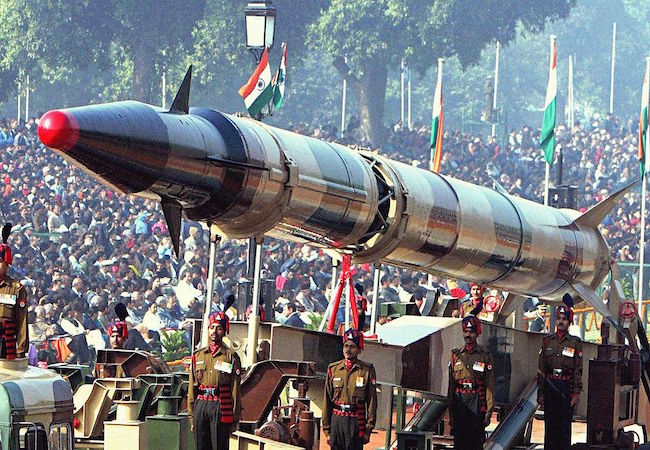
By Asma Khalid
Vipin Narang an expert on South Asian Nuclear strategy presented Indian case for abandoning the No First Use Policy. During the 2017 Carnegie International Nuclear Policy Conference, he generated a discourse on India’s No First Use Policy on the bases of India’s former National Security Advisor Shivshankar Meno’s writtings, Choices Inside making the Indian Foreign policy. India’s former National Security Advisor in his book writes:
“There is a potential grey area as to when India would use nuclear weapons first against another NWS (nuclear weapons state). Circumstances are conceivable in which India might find it useful to strike first, for instance, against an NWS that had declared it would certainly use its weapons, and if India were certain that adversary’s launch was imminent”.
On the above mentioned statement Narang has made assessment that India’s nuclear doctrine has ambiguous and not credible. Under such ambiguous nuclear policy India will not allow Pakistan to go for first use of nuclear capability during crisis but it may launch a preemptive counterforce strike against Pakistan to avoid tit-for-tat exchanges with Pakistan. Considering the revision of nuclear policy will not alarming as it is perceived by Indian aggressive lobbies. Because debate on India’s First Use policy is not new.
No First Use Policy simply presents that India’s nuclear resort would be ‘retaliation only’ and it will not be the first to use the nuclear weapon during conflict. However, it also states that India will retaliate with nuclear weapon to counter chemical or biological attack on its forces. Such fundamentals highlight the military, political and economic dimensions of Indian nuclear doctrine. Whereas first strike capability, simply states, a nuclear strike to eliminate the adversary’s nuclear weapon, with the aim to limit the own damage that adversary can inflict on its opponents.
On the bases of Vipin Narang assessment, now considering a hypothetical scenario that India abandoning the No First Use. Such scenario gives the impression that, India’s First Use doctrine would be highly destabilizing in two aspects: Firstly, misperception and miscalculation may cause escalation; secondly, first strike provides an incentive to pre-empt and preemption need not prove effective. It is not a coherent approach because practically it is not possible for India to eliminate all the nuclear adrenals of Pakistan due to the lack of capabilities to locate the hidden, mobile and dispersed delivery systems of Pakistan across the landmass and- at the sea. Moreover; nuclear First use make no sense for India as deterrence stability in South Asia is combination of three nuclear weapon states; India, Pakistan and China. On the bases of these factor, international analysts argue that despite revising nuclear doctrine it would not be possible for India to launch a preemptive counterforce strike against Pakistan.
Consequences, statements regarding the revision of nuclear doctrine by Indian government leaders are considered as the deliberate attempts for further exploitation of regional states and to create complications in the region. These developments will force the regional powers to review their options. Additionally, it will provide an excuse to the India to undertake a massive nuclear build-up as numbers of nuclear weapons will make the first strike effective. It could produce more aggressive nuclear arms race and instability during conflict. These fundamentals prove disproportional responses of India that it only makes verbal noises about arms control and disarmament.
It is imperative to note that first strike makes little sense, especially when the opponents have already acquired second strike capability levels of nuclear equipment. Though India’s first use make little sense but if happened then it would be necessary for Pakistan to quantatively and qualitatively develop the nuclear arsenals like ballistic missiles and MIRVs to maintain credible deterrence and ensure the survivability of its nuclear capabilities.
Asma Khalid is a Research Associate at Strategic Vision Institute, a think-tank based in Islamabad.




